
| Introduction | | Search taxa | | Taxon tree | | Taxon match | | Checklist | | Literature | | Stats | | Photogallery | | OBIS Vocab | | Log in |
WoRMS taxon detailsPetricolaria pholadiformis (Lamarck, 1818)
156961 (urn:lsid:marinespecies.org:taxname:156961)
accepted
Species
Gastranella tumida A. E. Verrill, 1872 · unaccepted > junior subjective synonym
Petricola (Petricolaria) pholadiformis Lamarck, 1818 · unaccepted > superseded combination
Petricola carolinensis Conrad, 1863 · unaccepted
Petricola flagellata Say, 1834 · unaccepted
Petricola fornicata Say, 1822 · unaccepted
Petricola lata (Dall, 1925) · unaccepted (synonym)
Petricola pholadiformis Lamarck, 1818 · unaccepted (original combination)
Petricola pholadiformis gracilis Deshayes, 1853 sensu van Regteren Altena, 1971 · unaccepted (misidentification)
Petricola pholadiformis lata (Dall, 1925) · unaccepted
Petricola rogersi McGavock, 1944 · unaccepted
Petricolaria pholadiformis var. lata Dall, 1925 · unaccepted > junior subjective synonym
marine,
(of Petricola pholadiformis Lamarck, 1818) Lamarck, [J.-B. M.] de. (1818). <i>Histoire naturelle des animaux sans vertèbres</i>. Tome cinquième, 612 pp. Paris, Deterville/Verdière. , available online at http://biodiversitylibrary.org/page/12886879 [details]
Distribution Gulf of St. Lawrence (unspecified region), southern Gaspe waters (Baie des Chaleurs, Gaspe Bay to American, Orphan and...
Distribution Gulf of St. Lawrence (unspecified region), southern Gaspe waters (Baie des Chaleurs, Gaspe Bay to American, Orphan and Bradelle banks; eastern boundary: eastern Bradelle Valley), Magdalen Islands (from eastern Bradelle valley to the west, as far as Cape North, including the Cape Breton Channel); Prince Edward Island (from the northern tip of Miscou Island, N.B. to Cape Breton Island south of Cheticamp, including the Northumberland Strait and Georges Bay to the Canso Strait causeway); Cobscook Bay [details]
MolluscaBase eds. (2025). MolluscaBase. Petricolaria pholadiformis (Lamarck, 1818). Accessed through: World Register of Marine Species at: https://www.marinespecies.org/aphia.php?p=taxdetails&id=156961 on 2025-07-04
Date action by
Nomenclatureoriginal description
(of Petricola pholadiformis Lamarck, 1818) Lamarck, [J.-B. M.] de. (1818). <i>Histoire naturelle des animaux sans vertèbres</i>. Tome cinquième, 612 pp. Paris, Deterville/Verdière. , available online at http://biodiversitylibrary.org/page/12886879 [details] original description (of Petricola carolinensis Conrad, 1863) Conrad, T. A. (1863). Catalogue of the Miocene shells of the Atlantic slope. <em>Proceedings of the Academy of Natural Sciences of Philadelphia.</em> 14: 559-586., available online at https://www.biodiversitylibrary.org/page/1952033 page(s): 576 [details] original description (of Gastranella tumida A. E. Verrill, 1872) Verrill, A. E. (1872). Brief contributions to zoölogy, from the Museum of Yale College. No. XX. Recent additions to the molluscan fauna of New England and the adjacent waters, with notes on other species. <em>American Journal of Science and Arts.</em> (3) 3 (15): 281-290; pl. 6-8., available online at http://biodiversitylibrary.org/page/36995471 page(s): 286, pl. 6 fig. 3, 3ª [details] original description (of Petricola fornicata Say, 1822) Say, T. (1822). An account of some of the marine shells of the United States. <em>Journal of the Academy of Natural Sciences, Philadelphia.</em> 2(1): 221-248; 2(2): 257-276, 302-325., available online at http://biodiversitylibrary.org/page/36831411 page(s): 319 [details] original description (of Petricola pholadiformis gracilis Deshayes, 1853 sensu van Regteren Altena, 1971) Regteren Altena, C. O. van. (1971). On six species of marine Mollusca from Suriname, four of which are new. <em>Zoologische Mededelingen.</em> 45 (5) : 75-86, pls 1-2., available online at https://repository.naturalis.nl/pub/319314/ZM1971045005.pdf page(s): 75, pl. 1 figs 4-6. [details] original description (of Petricolaria pholadiformis var. lata Dall, 1925) Dall, W. H. (1925). Note on the Atlantic coast species of Plicatula. <em>Proceedings of the Biological Society of Washington.</em> 38: 90. [details] basis of record Brunel, P., L. Bosse & G. Lamarche. (1998). Catalogue of the marine invertebrates of the estuary and Gulf of St. Lawrence. <em>Canadian Special Publication of Fisheries and Aquatic Sciences, 126.</em> 405 pp. (look up in IMIS) [details] Available for editors Othercontext source (Introduced species)
Katsanevakis, S.; Bogucarskis, K.; Gatto, F.; Vandekerkhove, J.; Deriu, I.; Cardoso A.S. (2012). Building the European Alien Species Information Network (EASIN): a novel approach for the exploration of distributed alien species data. <em>BioInvasions Records.</em> 1: 235-245., available online at http://easin.jrc.ec.europa.eu [details] Available for editors
context source (Schelde) Maris, T., O. Beauchard, S. Van Damme, E. Van den Bergh, S. Wijnhoven & P. Meire. (2013). Referentiematrices en Ecotoopoppervlaktes Annex bij de Evaluatiemethodiek Schelde-estuarium Studie naar “Ecotoopoppervlaktes en intactness index”. [Reference matrices and Ecotope areas Annex to the Evaluation methodology Scheldt estuary Study on “Ecotope areas and intactness index”. <em>Monitor Taskforce Publication Series, 2013-01. NIOZ: Yerseke.</em> 35 pp. (look up in IMIS) [details] context source (BeRMS 2020) Bio-environmental research group; Institute of Agricultural and Fisheries research (ILVO), Belgium; (2015): Macrobenthos monitoring in function of the Water Framework Directive in the period 2007-2009. [details] additional source Turgeon, D. D., W. G. Lyons, P. Mikkelsen, G. Rosenberg, and F. Moretzsohn. 2009. Bivalvia (Mollusca) of the Gulf of Mexico, Pp. 711–744 in Felder, D.L. and D.K. Camp (eds.), Gulf of Mexico–Origins, Waters, and Biota. Biodiversity. Texas A&M Press, Colleg [details] Available for editors additional source Huber, M. (2010). <i>Compendium of bivalves. A full-color guide to 3,300 of the world's marine bivalves. A status on Bivalvia after 250 years of research</i>. Hackenheim: ConchBooks. 901 pp., 1 CD-ROM. (look up in IMIS) [details] additional source Trott, T. J. (2004). Cobscook Bay inventory: a historical checklist of marine invertebrates spanning 162 years. <em>Northeastern Naturalist.</em> 11, 261-324., available online at http://www.gulfofmaine.org/kb/files/9793/TROTT-Cobscook%20List.pdf [details] Available for editors  Present Present  Present in aphia/obis/gbif/idigbio Present in aphia/obis/gbif/idigbio  Inaccurate Inaccurate  Introduced: alien Introduced: alien  Containing type locality Containing type locality
From regional or thematic species database
Introduced species vector dispersal in United Kingdom part of the North Sea (Marine Region) : Fisheries: accidental with deliberate translocations of fish or shellfish [details]Introduced species vector dispersal in United Kingdom part of the North Sea (Marine Region) : Shipping [details] Introduced species vector dispersal United States part of the North Pacific Ocean (Marine Region) Aquaculture: accidental [details] Introduced species vector dispersal Greek part of the Aegean Sea (Marine Region) Ships: accidental with ballast water, sea water systems, live wells or other deck basins [details] Unreviewed
Alien species The natural distribution area of the false angelwing Petricolaria pholadiformis was limited to the east coast of North America, but was brought to Europe (England) around 1890 together with the transport of the eastern oyster Crassostrea virginica. The planktonic larvae of the false angelwing could subsequently reach the rest of Europe by hitch hiking on the sea currents. The species was first observed in Belgian waters at Nieuwpoort in 1899. In Today, the false angelwing can mainly be found along the east part of Belgian's coast. This bivalve drills passageways in peat blocks, wood, hard clay and limestone. Living individuals are often found in washed ashore peat blocks. Empty shells are frequently found on Belgian beaches. [details]Distribution Gulf of St. Lawrence (unspecified region), southern Gaspe waters (Baie des Chaleurs, Gaspe Bay to American, Orphan and Bradelle banks; eastern boundary: eastern Bradelle Valley), Magdalen Islands (from eastern Bradelle valley to the west, as far as Cape North, including the Cape Breton Channel); Prince Edward Island (from the northern tip of Miscou Island, N.B. to Cape Breton Island south of Cheticamp, including the Northumberland Strait and Georges Bay to the Canso Strait causeway); Cobscook Bay [details] Habitat infralittoral of the Gulf and estuary [details]
Encyclopedia of Marine Life of Britain and Ireland (from synonym Petricola pholadiformis Lamarck, 1818)
European Network on Invasive Alien Species (NOBANIS) - Petricola pholadiformis (from synonym Petricola pholadiformis Lamarck, 1818) Marine Life Information Network - UK (from synonym Petricola pholadiformis Lamarck, 1818) To Barcode of Life (7 barcodes) To Biodiversity Heritage Library (1 publication) (from synonym Petricola lata (Dall, 1925)) To Biodiversity Heritage Library (12 publications) To Biodiversity Heritage Library (25 publications) (from synonym Gastranella tumida A. E. Verrill, 1872) To Biodiversity Heritage Library (261 publications) (from synonym Petricola pholadiformis Lamarck, 1818) To Conchology (Petricolaria pholadiformis cf.) To Conchology (Petricolaria pholadiformis cf.) To Conchology (Petricolaria pholadiformis cf.) To Conchology (Petricolaria pholadiformis) To Conchology (Petricolaria pholadiformis) To Conchology (Petricolaria pholadiformis) To Dyntaxa (from synonym Petricola pholadiformis Lamarck, 1818) To European Nucleotide Archive, ENA (Petricolaria pholadiformis) To GenBank (18 nucleotides; 6 proteins) To GenBank (18 nucleotides; 6 proteins) (from synonym Petricola pholadiformis Lamarck, 1818) To Information system on Aquatic Non-Indigenous and Cryptogenic Species (AquaNIS) To Malacopics (Petricolaria pholadiformis (Lamarck, 1818) Netherlands, Zuid-Holland, Wassenaar, Mei... To Malacopics (Petricolaria pholadiformis (Lamarck, 1818)) To Marine Bivalves of the British Isles webpage at National Museum of Wales To Niet-inheemse soorten Belgisch deel Noordzee en aanpalende estuaria (in Dutch) To PESI To PESI (from synonym Petricola pholadiformis Lamarck, 1818) To PESI (from synonym Gastranella tumida A. E. Verrill, 1872) To PESI (from synonym Petricola lata (Dall, 1925)) To USNM Invertebrate Zoology Mollusca Collection (from synonym Petricola pholadiformis Lamarck, 1818) To Yale Peabody Museum of Natural History (YPM IZ 033392) To ITIS |

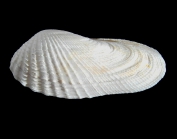
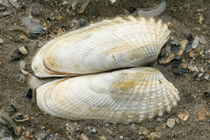
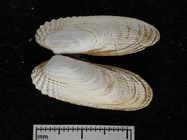
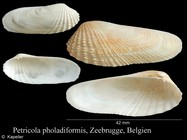
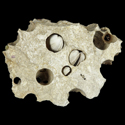
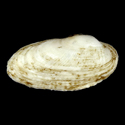
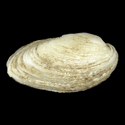
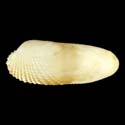
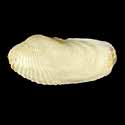
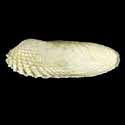
.jpg)
.jpg)
